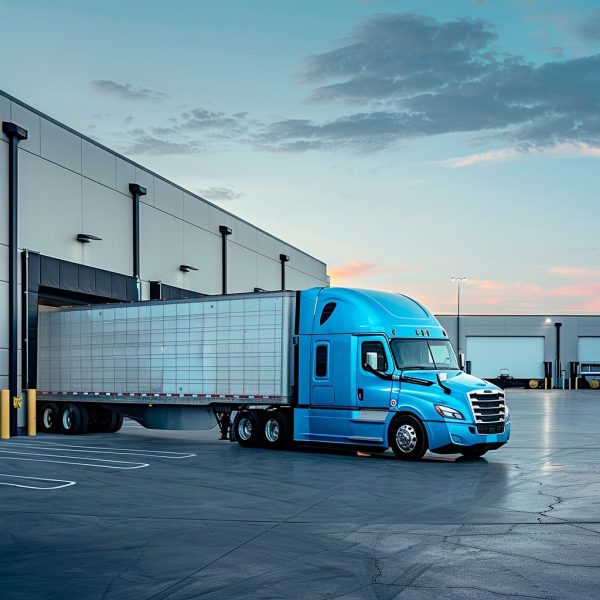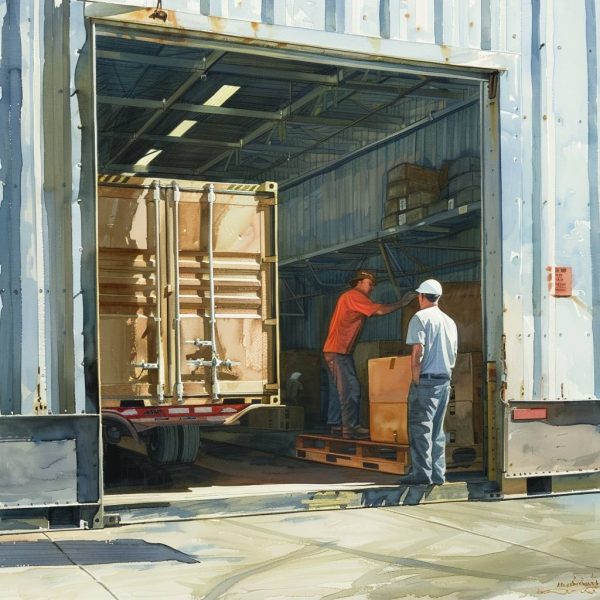Understanding LTL Shipping
LTL shipping is a cost-effective way to transport goods for e-commerce businesses. It allows you to share transportation costs with other companies, making it more economical, and cost effective.
Table of Contents
Looking for a 3PL Company for your Amazon Product or Ecommerce Business?
Definition of LTL Shipping
LTL stands for Less-Than-Truckload. This means your shipment doesn’t fill an entire truck. Instead, your goods share space with shipments from other businesses.
It’s ideal for businesses that don’t have enough goods to require a full truckload.
LTL shipping typically ranges from 150 pounds to 10,000 pounds. Goods are usually palletized for easier loading and unloading.
By combining multiple shipments into one truck, LTL carriers maximize efficiency and reduce costs for all shippers.
Benefits of LTL Shipping for E-Commerce
LTL shipping offers several advantages:
- Cost Savings: Because you only pay for the space your goods occupy, costs are shared among multiple shippers.
- Flexibility: You can ship smaller quantities as needed, helping you manage inventory better.
- Reach: LTL carriers often cover wide geographic areas, including international destinations like Canada and Mexico.
For an e-commerce business, LTL shipping can help you balance supply and demand, reduce shipping expenses, and ensure timely deliveries to various locations.
LTL shipping is also eco friendly, much like carpooling but for your goods. With less trips emissions stay low, without the loss of quality or speed.
Comparing LTL and FTL Shipping
Less-Than-Truckload (LTL) Shipping:
- Cost: Shared cost among multiple shippers.
- Ideal For: Smaller shipments, typically up to 10,000 pounds.
- Flexibility: Ship goods without needing a full truckload.
Full Truckload (FTL) Shipping:
- Cost: You pay for the entire truck, regardless of its size.
- Ideal For: Large shipments that can fill an entire truck.
- Flexibility: Suitable for businesses with consistent, high-volume shipping needs.
Implementing LTL Shipping in E-Commerce
Successful implementation of LTL (Less-Than-Truckload) shipping in e-commerce involves deciding when to use it and how to integrate it with your existing shipping and inventory management platforms.
Evaluating When to Use LTL Shipping
Consider factors like shipment size and cost to decide if LTL shipping is right for your business.
LTL shipping is best for shipments ranging from 150 to 10,000 pounds. It’s ideal when you don’t need a full truckload.
Another factor is the cost. Since the truck’s space is shared with other shippers, the individual cost of shipping reduces significantly.
This is beneficial for small to medium-sized businesses looking to save on transportation. It also offers flexibility and scalability to adjust as needed without overpaying for unused space.
Pros:
- Ideal for medium weight shipments
- Reduced shipping costs
- Flexible and scalable
Cons:
- Possible longer transit times compared to full truckload shipping
Integrating LTL Shipping with E-Commerce Platforms
Integration with ecommerce platforms like Shopify, WooCommerce, or Magento is crucial to effectively use LTL shipping.
Most modern e-commerce platforms offer plugins or apps to integrate LTL services directly into your store’s backend.
Start by finding a reliable LTL freight provider that offers API integration. Use these APIs to automate shipping quotes, tracking, and notifications within your e-commerce platform.
This ensures your customers receive accurate shipping information in real-time.
It’s also important to train your staff to handle LTL shipments, from packaging requirements to documentation. This will make the process smoother and more efficient, ensuring timely deliveries which will keep your customers happy.
LTL Shipping Strategies
Effective strategies are needed to maximize Less-Than-Truckload (LTL) shipping for your e-commerce business. Key areas include optimizing packaging, combining shipments, and negotiating carrier rates.
Optimizing Packaging for LTL Shipments
Proper packaging is crucial for safeguarding your goods and minimizing shipping costs.
Use sturdy boxes that are exactly the right size. Overpacking can lead to wasted space and higher costs, while underpacking risks damage.
To protect your items, consider layering materials such as bubble wrap, foam, or packing peanuts. Label your packages clearly with shipping and handling instructions.
Enforcing a strict packing protocol will help ensure consistency and reduce the chance of errors.
Maintain a balance between protecting goods and minimizing costs. Be mindful of the weight and volume each package adds to your shipment.
Consolidation Strategies
Consolidating shipments is a smart way to save costs.
Combine smaller packages into larger ones to fill as much truck space as possible. This reduces the price per unit shipped and maximizes efficiency.
Schedule shipments together when you can to reduce the number of trips needed.
Inventory management systems can help track when and what needs shipping, making it easier to assess the best times for consolidation.
Another strategy is to work with a freight consolidator who can pool shipments from various businesses. This gives you better rates and service options.
Negotiating LTL Shipping Rates
Negotiating rates with carriers can cause substantial savings.
Start by understanding the carriers’ pricing models, which often include base rates, fuel surcharges, and additional fees for services like delivery and liftgate usage.
Build relationships with carriers. Frequent and reliable shippers may receive better terms and discounts.
Don’t hesitate to ask for volume discounts if you ship regularly.
Another tactic is comparing quotes from multiple carriers to ensure you get the best deal.
Use TMS (Transportation Management Systems) to access various carrier rates and find competitive pricing for your shipping needs.
Managing LTL Shipments
Effective LTL shipment management is crucial for e-commerce businesses. You must track shipments, deal with challenges, and ensure quality control to improve efficiency and customer satisfaction.
Tracking LTL Shipments
Tracking your LTL shipments is essential for monitoring your products as they move through the supply chain. Most carriers provide tracking numbers and online tracking services.
To ensure successful tracking, always confirm that the carrier provides updates at key points, such as pickup, transit, and delivery.
You can also integrate tracking software into your e-commerce platform. This lets you monitor shipments in real-time and quickly address any delays or issues.
Communicate with your carrier regularly to stay informed about your shipments’ status.
Dealing with LTL Shipping Challenges
LTL shipping can present several challenges, from delays to damaged goods. Addressing these issues effectively requires a proactive approach.
First, always choosing reliable carriers with good track records. This reduces the likelihood of delays and damaged goods. With the internet we have access to business reviews. See if the carrier is worth your business before doing business with them.
Second, ensure your cargo is properly packaged and labeled. This helps mitigate problems in the shipping process, and helps keep track of your packages while in transit.
Another common challenge is handling mismatched or lost shipments. It’s likely to happen, contact your shippers to see how they can work with you when this occurs.
Ensure your packages are marked and have proper documentation. Keep close communication lines open with your carrier to resolve any issues that arise quickly.
Ensuring Quality Control
- Maintaining quality control in LTL shipments is vital for customer satisfaction.
- Start by selecting carriers that have a reputation for excellent service.
- Inspect your packages before they are shipped to ensure they are securely packed. Use high-quality materials to prevent damage.
- Implement checks and balances in your shipping process. This could involve multiple inspections at various stages—from packing to loading onto the truck.
- To improve quality control, incorporate customer feedback and continuously improve your shipping processes.
Frequently Asked Questions
LTL shipping optimizes costs by sharing truck space with other shipments. It is perfect for businesses that don’t need to fill an entire truck.
Using LTL, you can also schedule more frequent deliveries, which helps manage inventory better.
Most LTL carriers offer online tracking tools. You can monitor your shipment through the carrier’s website using a tracking number provided at the time of shipment.
Regular updates on the status and location of your freight allow you to plan better.
First, select a reliable LTL carrier. Next, ensure your goods are properly packaged and labeled.
Then, schedule a pickup with the carrier and provide accurate shipment details. Lastly, track the shipment and communicate with the carrier as needed.
Look for carriers with a good reputation and reliable services.
Consider delivery times, tracking capabilities, coverage area, and rates.
Read reviews and potentially seek recommendations from other businesses in your industry.
LTL freight involves pooling shipments from multiple businesses, making it more economical for smaller loads.
It differs from Full Truckload (FTL) shipping, which uses an entire truck for a single shipment. Choose LTL when your cargo is too large for parcel services but doesn’t need an entire truck.










